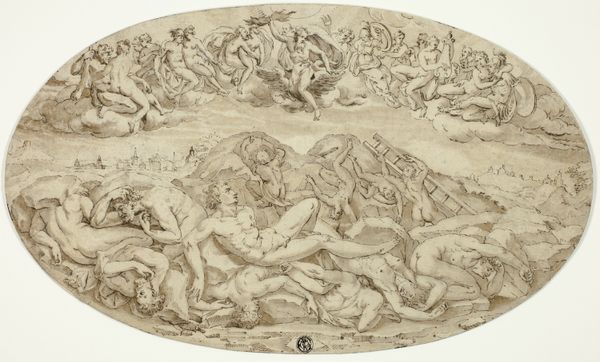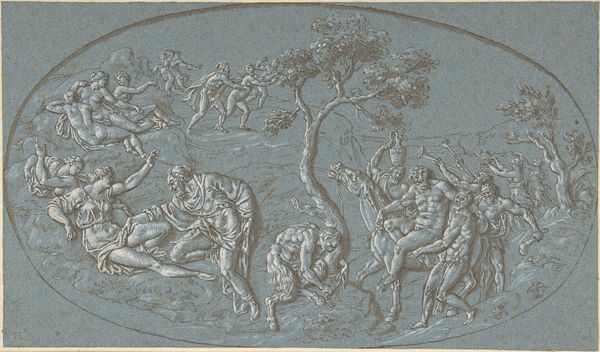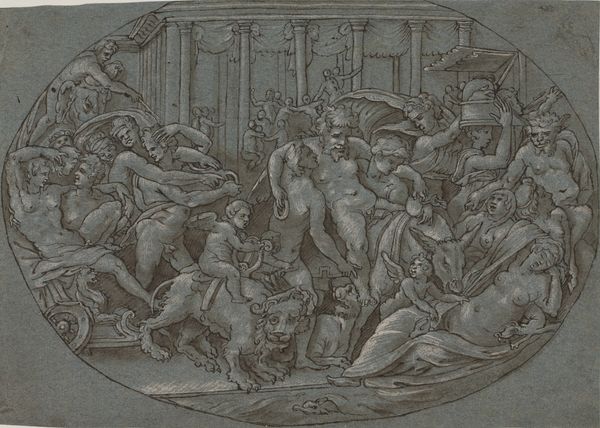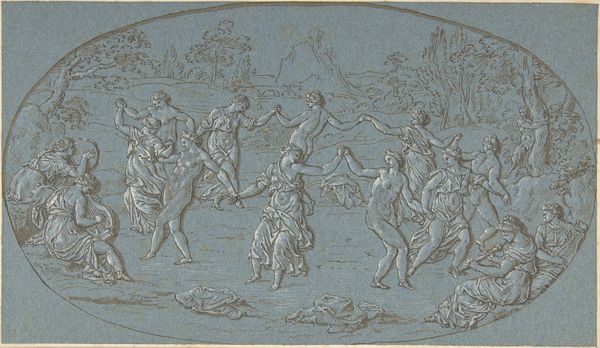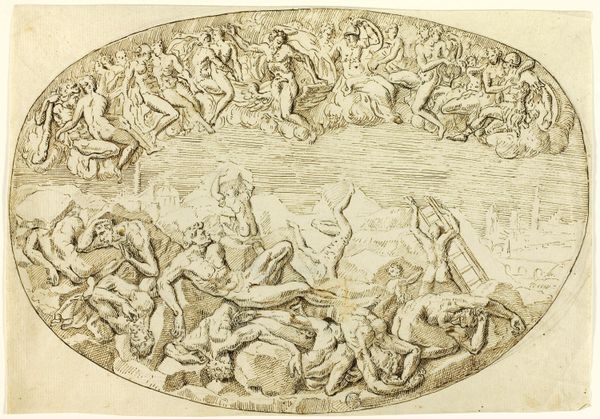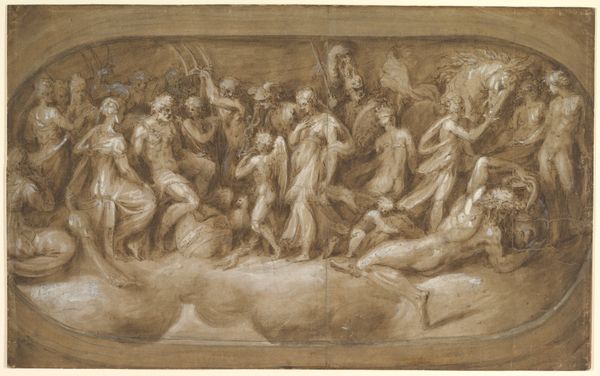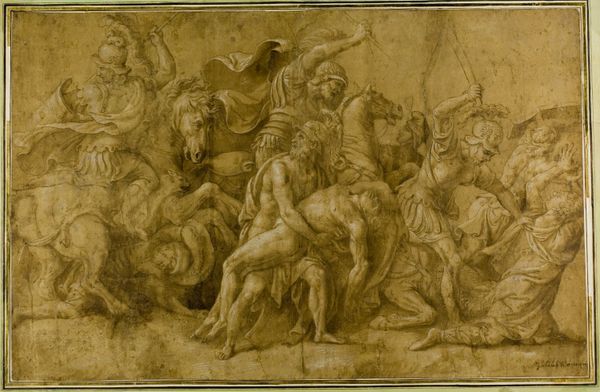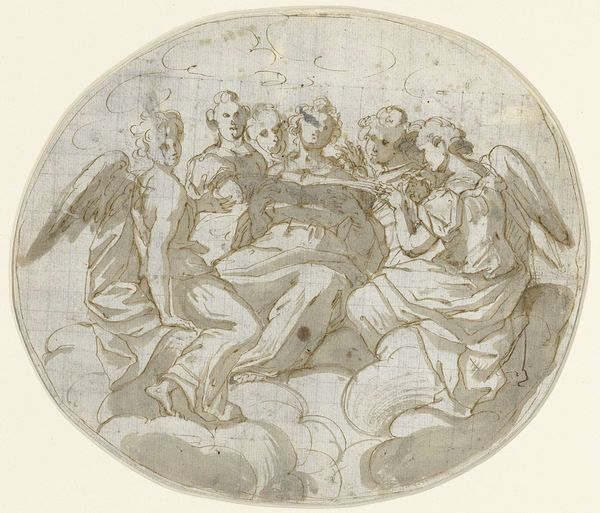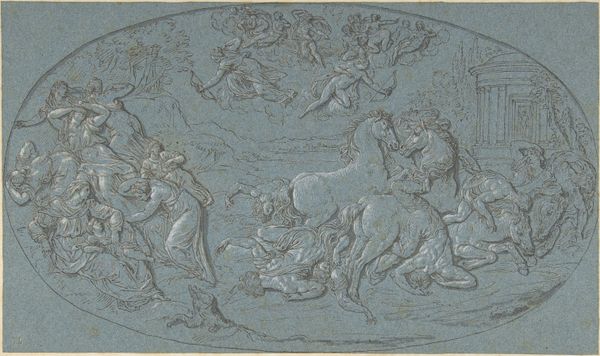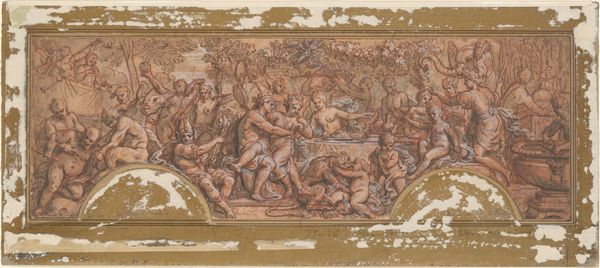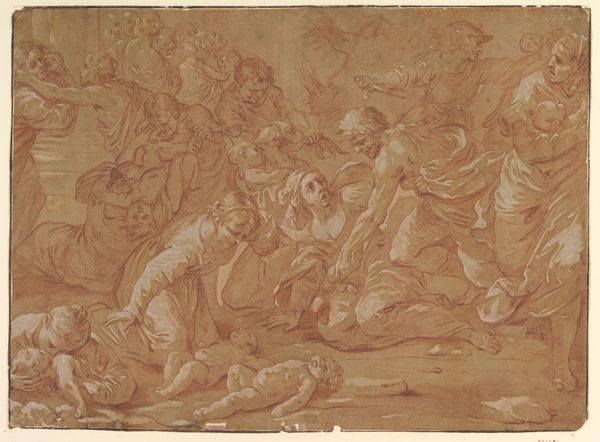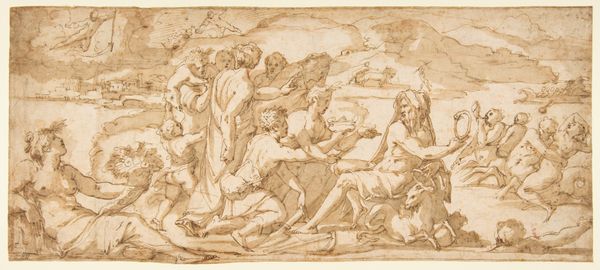
drawing, print, engraving
#
drawing
#
allegory
#
baroque
# print
#
figuration
#
female-nude
#
history-painting
#
nude
#
engraving
#
male-nude
Dimensions: sheet: 6 7/16 x 10 13/16 in. (16.4 x 27.5 cm)
Copyright: Public Domain
Curator: This is "Fall of the Giants," a drawing and engraving created between 1693 and 1733 by Bernard Picart. It resides here at the Metropolitan Museum of Art. Editor: My first impression is one of immense drama and almost dizzying movement. The swirling figures above and the toppling giants below create a strong sense of chaos and defeat. Curator: Absolutely. Picart has employed a baroque style to convey this chaos. Note the dramatic contrast of light and shadow and the exaggerated musculature of the figures. We can examine the linear quality of the engraving, especially when we think about the paper itself as a commodity, how that process impacts art consumption. Editor: The composition is remarkable. The artist cleverly uses the oval shape to divide the heavens and earth. How the composition uses the vertical space to create that dynamic sense of falling? Curator: The depiction of nudes also ties into broader social themes about morality. Picart’s technique here tells us a lot about labor standards, as the act of engraving was physically grueling. This helps to give a better sense of the history surrounding how the artist crafted it. Editor: Thinking about materials, the contrast between the soft cloud formations above and the jagged rocks below creates textural variety that is compelling. There are compositional parallels and balances to notice across these visual elements. Curator: I agree. Looking more deeply at the allegory, we can see representations of morality in tension between labor and history during that era of artwork production. This makes for a better reading of themes around allegory at play in the drawing itself. Editor: Overall, the powerful narrative and striking visual language create a memorable impression. The dynamism holds our attention even centuries later, due to the sheer amount of information. Curator: Examining this work illuminates not only the talent of the artist but the whole set of human power and value judgments behind artwork production, allowing for a deeper reading into themes of that era. Editor: Agreed, by considering the relationships of the lines, shapes, and forms within it, we gain a more complete viewing experience.
Comments
No comments
Be the first to comment and join the conversation on the ultimate creative platform.
